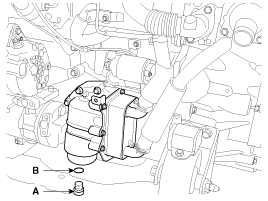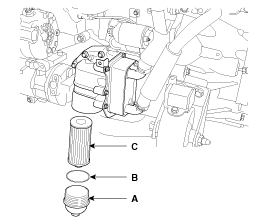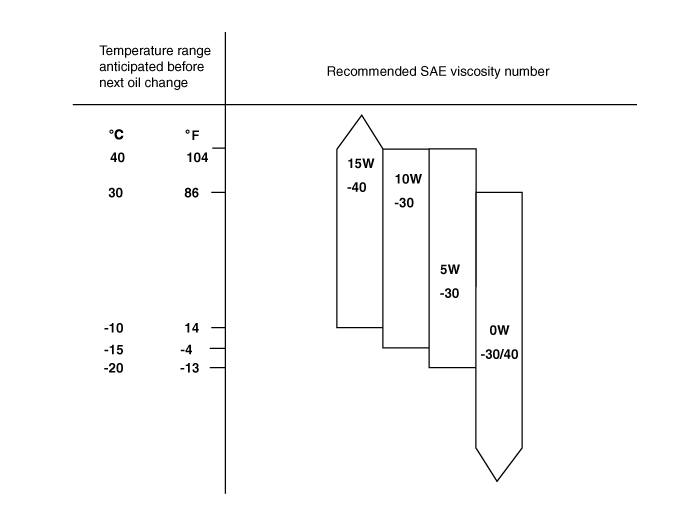Replace the oil filter (B).
Remove the drain bolt (A) on the bottom of the oil filter cap and drain the oil in the oil filter. Replace the O-ring (B) of the drain bolt with a new one.

Remove the oil filter cap (A).
Replace the O-ring (B) of the oil filter cap with a new one.
Inspect the threads and O-ring (B) of the filter cap. Wipe off the seat on the oil filter cap, then apply a light coat of oil to the oil filter cap O-ring (B).
Install the new oil filter element (C).
Lightly screw the oil filter cap into place, and tighten it until the O-ring contacts the seat.
Finally tighten it again by specified tightening torque.
Tighten the drain bolt by specified tightening torque.
Tightening torque :
Drain bolt : 10.0N.m (1.0kgf.m, 7.4lb-ft)
Oil filter cap : 31.5 ~ 38.5N.m (3.2 ~3.9kgf.m, 23.2 ~ 28.4lb-ft)

Before installing new engine oil filter element, be sure to clean residual oil inside of the oil filter housing and oil filter cap and on the threads of the oil filter cap.
If not, residual oil will come out of the oil filter housing and cap and it may be mistaken as an oil leak.

